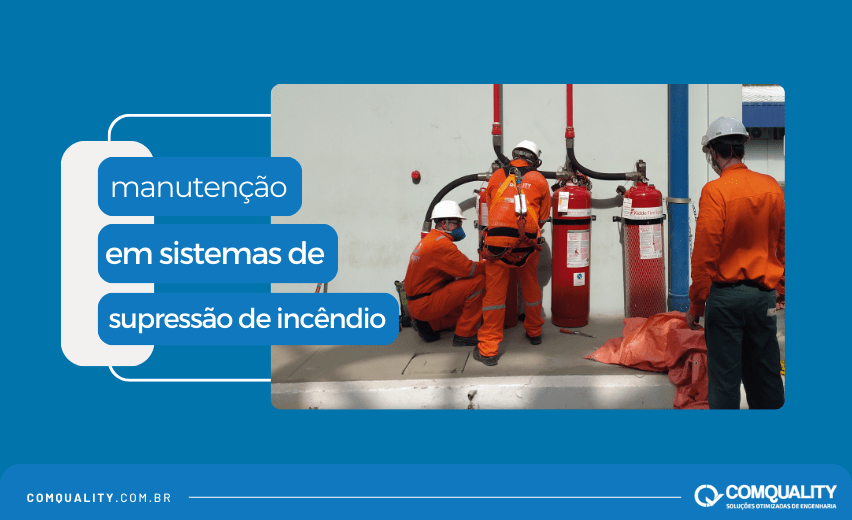A poorly maintained suppression system can result in critical failures during a fire, putting lives at risk and causing significant property damage.

Suppression systems have evolved significantly with the advancement of technology, seeking more effective, fast, and secure solutions for fire protection. Some advanced technologies in suppression systems include:
Intelligent Fire Detection: Modern systems use advanced sensors such as smoke, heat, and flame detectors that can distinguish between different types of fires. Artificial intelligence algorithms are employed for pattern analysis, improving detection accuracy and reducing false alarms.
Automatic Suppression Systems: In addition to traditional sprinklers, automatic suppression systems can now use advanced extinguishing agents such as inert gases (such as argon and nitrogen) or clean chemical agents (such as FM-200 and Novec 1230). These agents extinguish fires quickly without causing damage to the environment.
High-Speed Water Spraying Technology: Some facilities use high-speed water spraying systems that respond instantly to fire detection. These systems minimize fire spread by releasing water precisely and effectively at the fire location.
Ensuring that these systems remain reliable and effective over time is of utmost importance, as a poorly maintained suppression system can result in critical failures during a fire, putting lives at risk and causing significant property damage. Here are some essential aspects of fire suppression system maintenance:
Regular Inspections:
Rely on a company that conducts regular inspections throughout the system, checking each component, such as sprinklers, pipes, detectors, valves, and control units. Ensure there are no obstructions in the sprinkler outlets and that they are pointing in the correct direction.
Functional Testing:
As part of the maintenance plan provided by the contracted company, periodic functional tests should be performed to ensure all components operate as designed. Request tests for smoke, heat, and flame detectors, as well as alarm devices and sirens.
Valve and Control Device Maintenance:
System valves need to be checked regularly to ensure they are open and free of obstructions. Control devices should be tested to ensure they can activate and deactivate the system properly.
Replacement of Worn Components:
When indicated by the third-party company, worn components such as seals, gaskets, or damaged sprinkler nozzles should be replaced. Upgrade components to newer versions, if necessary, to ensure compliance with the latest safety standards.
Suppression Agent Verification:
The quantity and pressure of the suppression agent in the system should be verified, whether it’s water, inert gases, or clean chemical agents. Ensure that the suppression agent is suitable for the type of risk it is intended to suppress.
Control and Monitoring System Updates:
Keep control and monitoring systems up to date to incorporate the latest technologies and ensure a fast and efficient response.
Compliance with Standards and Regulations:
Ensure the system complies with all relevant local, national, and international standards and regulations.
Documentation and Records:
Maintain detailed records of all inspections, tests, and maintenance activities performed on the system. Document any modifications made to the system to ensure a comprehensive understanding of the maintenance history.
Relying on a company specialized in fire engineering solutions is vital for the proper functioning of your company’s suppression system.
Contact Comquality Engenharia for more information!
📞 +55 71 3622-1255
📩 comercial@comquality.com.br
🌍 www.comquality.com.br